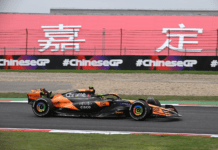Some of the teams are concerned with the components limit and the penalties with extra use as F1 calendar gets expanded.
The 2020 F1 season looks likely to have 22 races with only Germany missing from 2019 which is being replaced by Dutch GP and Vietnam GP getting added to make it the biggest calendar in the sport’s history.
This will burden the F1 teams with not only personnel issues but also have a strain on the certain components which is limited by rules to a maximum of three, with an extra part to result in grid penalties.
While the efficiency level has increased in recent times but F1 teams continue to push for performance which forces them to use the extra parts. It is a heavy toll on the customer teams though as they are to pay more.
The last discussion was to restrict to three components with the idea of a better reliability. With the F1 calendar set to increase, some of the teams feel that this will certainly increase the chances of more penalties.
“The commercial rights holder has come to us to say, you know, that 22 races is a possibility for next year and would we support it,” said Red Bull Racing’s Christian Horner. “I think in principle, yes, is the answer.
“But it has to be combined with what other activities are going on in terms of: do we need to do as much in-season testing as we currently do; do we need to do as much pre-season testing?
“And I think if we are to introduce a 22nd race the majority of teams are taking penalties and using four engines anyway, so one would assume that it would make sense to increase the allocation on power units and components.
“And perhaps if we look at the ratio and say ‘well, OK, rather than using engines for going testing and if we reduce the in-season testing and pre-season testing slightly, if that frees up an engine that the majority of teams they’re going to use anyway.
“From the next race there is going to be a whole raft of penalties coming through, and we’re only just halfway through the season, so introducing another race on top of that and expecting teams to get through on three engines and three sets of components is a bit of a tall ask.”
Interestingly, Ferrari’s Mattia Binotto did not support the idea of increasing the allocation as it works in the wrong direction of the costs. In reality, it also helps their rivals to have less number of penalties, especially in case of Honda.
“We are supportive on a 22nd race if that means some more revenues but we need to certainly be careful on the costs, the extra costs,” he said. “If you look as well at 2021 at the moment we are discussing for 24 races but no extra engines, no extra units.
“So I think it’s only a path to 2021, so increasing the number of units for next year would be simply wrong, because it would mean, yes, more revenues, but then more costs, which would make no sense overall and so it should be on the power unit manufacturer to try to do an effort which is in the direction of 2021 to afford an extra race with the components we’ve got.
“I think reducing testing is certainly something we need to discuss but it could be a great idea, yes.” McLaren’s Andreas Seidl viewed: “In principle we support the direction of going for 22 races next year.
“There’s a discussion ongoing at the moment about what that means actually in terms of the number of components to be used and also the costs for a team like us, so that’s still ongoing.
“I think if you look at the bigger picture for us, it’s simply important now also to be a bit careful not to increase the number of races even further – for two reasons really. First of all, I think we really need to look after our people and make sure that we don’t ask for too much there, because I think if we go now for the next step of even more races we definitely have to change some things inside our organisations, for all teams.
“And then, yeah, that’s pretty much it. The second point of course we understand the commercial point of view but I think it‘s also important that we keep this exclusivity for each of the events, which doesn’t necessarily get better by adding more and more races.”
Williams’ Claire Williams talked more about the personnel side as the smaller teams do not have the luxury to rotate people due to less number working for them. “I think there is a lot more conversation to be had around it, particularly around the components,” she started.
“From a financial perspective, we need to just make sure that it’s going to work, that it cover all our costs, and we are at that point now where we’d say yes it would. But I think most importantly from our side it’s consideration of our team personnel.
“I think pretty much they are pushed to the limit at the moment with what we are asking them to do with 21 races and the tests on top of that and then the work they have to do in the factory in between. In our team we don’t necessarily have the luxury of rotating staff in and out, we are at capacity on head count.
“So it would be around looking into that and working out whether we need to bring in more people to support it. I think from our perspective again, I wouldn’t want to see a triple-header on the calendar. I think we have been assured that there wouldn’t be one.
“I think that broke a lot of people last year, but also from a logistical perspective that is just a nightmare; it’s a disaster. Going to Austria I think it was when we all took makeshift motorhomes, it doesn’t look great for the race but it’s just not good for anyone’s cost base either.”
Alfa Romeo Racing’s Beat Zehnder alluded the same as Williams. For the moment, it is likely that F1 will have 22 races as mentioned above but the likelihood of 24-25 races remains to be seen.



















